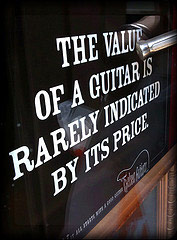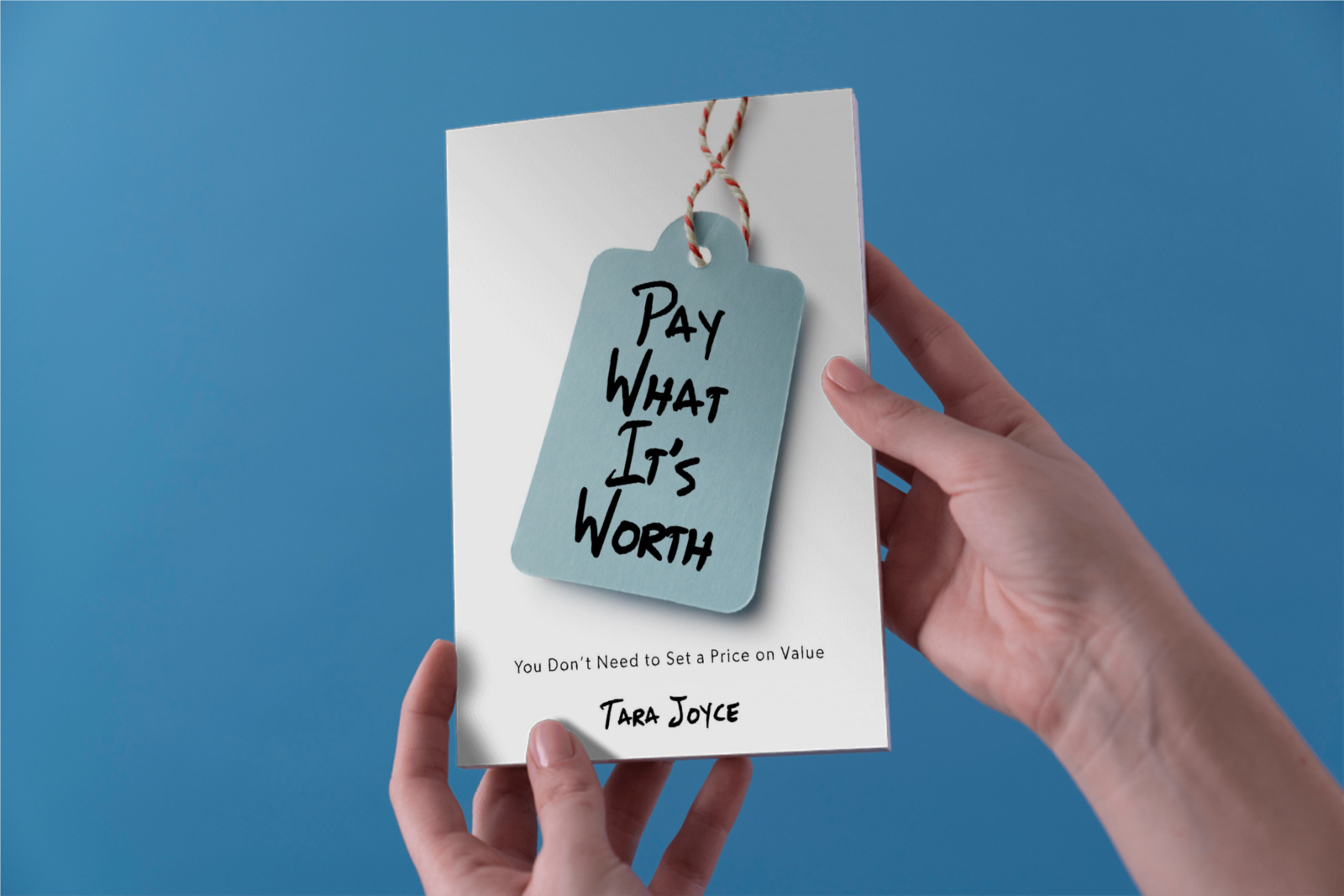
by Tara Joyce | Aug 20, 2009 | Innerpreneurship

Somewhere in between the stereotype and the truth
‘Hippies’ are often associated with a removal from ‘the real world’. They’re blissed out, unaware of the true realities of how our society actually functions. It’s all planting trees, doing sun salutations and blowing bubbles.
Often times their points of view are far left, viewing economic and political freedom as an evil — seeing it as the source of most of the world’s problems. The corporate drones must be stopped. Unrestricted wealth pollutes absolutely.
It’s as narrow-minded a view as the people and businesses they scorn. It’s still an either/or, black/white way to think. They’re saying economic gain and personal development can not co-exist together.
Do good and make money too.
An innerpreneur, however, understands that political and economic freedom is their tool for personal growth and for encouraging social and environmental responsibility. You can have your cake and eat it too.
Business isn’t bad or dirty, it just lacks meaning and purpose sometimes.
But things are changing. There are many of us optimistic creators sneaking around, quietly growing in numbers, getting fat and blissing this world out.
photo by: cyberuly

by Tara Joyce | Aug 17, 2009 | My Journey | What's On My Mind, Pay What It's Worth Pricing

Call it what you will — value pricing, karma pricing, pay-what-it’s-worth pricing — any way you cut it, not having a price is not normal. Letting your customers set your price is very unorthodox. And yes, it makes people uncomfortable.
As far as I can tell, it’s hardly ever done. I learned about the idea from author Phillip Dignan, and in the last 6 months I’ve learned that Radiohead and a few restaurants use the model, as well as a web developer in India and a business consultant in England. And there’s also a woodworker in America that is experimenting with it… and then there’s me.
Getting comfortable with value pricing
Since February I’ve been working towards establishing a solid payment structure, i.e., when and how to charge clients, for my service-based business. It’s important that the structure works for me, but also creates a straight-forward and comfortable atmosphere for my clients to explore and practice value pricing.
My initial questions on how to value price a service
- Do I request an initial deposit, i.e., the value you place on the opportunity to work with me?
- Do I bill per project?
- Do I bill per time period?
- Do I bill per project milestone?
- Do I bill per session?
I’ve settled on #3. Pricing per time period
I realized that bottom line, the structure I chose needed to pay me regularly. Working for months without payment is not a viable, nor smart option — for that reason I was able to discount billing per project immediately. In the past half a year I’ve experimented directly with billing per project, per project milestone and per time period.
I have not experimented with initial deposits or billing per session.
Pros and cons of each pricing structure option
- Requesting an initial deposit
pros: establishes client commitment to the project and to the pricing system | cons: an undetermined deposit value is confusing, perhaps too wacky for clients to feel comfortable with?
- Billing per project
pros: full, big picture value of work is realized before payment | cons: I’d work for months without any income; requires large lump sum payment from client; lack of time accountability could result in client stagnating the project completion
- Billing per time period, e.g., billing bi-weekly
pros: more regular income, easy for clients to conceptualize the value between payments | cons: holidays and other work interruptions can make billing confusing
- Bill per project milestone, e.g., planning the website
pros: tangible experience received before each payment is made | cons: income can be months apart; requires larger bulk payments for clients; can be hard to discern time and value-provided between far-reaching milestones; lack of time accountability could result in client stagnating the project completion
- Bill per session
pros: client is valuing something tangible; regular income for me | cons: I do work for my clients between sessions
Key learnings from the last 6 months
- Value pricing establishes an immediate and deep trust between my client and I.

- My pricing structure must create a regular income stream.
- I do not accept payments for future value, i.e., I do not take money unless an already created value it attached to it.
- I must be discerning about who I work with, i.e., you need to “get” the idea of value pricing or at least be open to it.
- It is not pay-what-you-can as my client’s financial situation is not my business. It’s pay-what-it’s-worth and how you fund this is not my problem.
I’ve got so much more learning and growing to do with the concept of value pricing but I can honestly say that it has been and continues to be a very positive business experience.

by Tara Joyce | Aug 14, 2009 | Cultural Creativity, Self/Business Growth

We all make mistakes, we can’t control the fact that we are imperfect. How we react to those mistakes, however, is ours to determine.
Useless regret
It’s easy to look back and chastise your Self for the choices you made — for the words you ‘shouldn’t’ have used or the actions you ‘shouldn’t’ have taken. We beat our Self up for hurting others, for being misguided in our actions, for being wrong. We wonder how we could have been so stupid and we wish we could go back in time and undo what was done.
What we know now…
What we fail to remember when we regret something is that the realities of today are not the realities of yesterday. What we fail to celebrate is the fact that at the moment when we made the choice it seemed most right and true for our Self.
Don’t doubt your choices. Don’t regret your past.
There are no mistakes. You are exactly where you are meant to be. Don’t doubt your inner voice even when it seems that it has lead you astray. We often learn more from the mistakes than we do the triumphs.
If we don’t accept our past, we will be driven to make choices with our ego rather than our higher Self. We’ll end up making decisions that will neither support our Self nor anyone else.
So next time you’re wishing you could undo the past focus on what you’ve learned from it and how you’ve grown since then.
photo credit: photine

by Tara Joyce | Aug 10, 2009 | Cultural Creativity, Self/Business Growth

The truth on the art of living
These are direct excerpts from Stephen Lam’s English translation of the Tao Te Ching. The headers are my take on the whole thing.
On being
The more truly solitary we are, the more compassionate we can be.
The more we let go of what we love, the more present our love becomes.
The clearer our insight into what is beyond good and evil, the more we can embody good.
On evil
Evil – a state of self-absorption in disharmony with the universal process
In action
In dwelling, live close to the ground. In thinking, keep to the simple. In conflict, be fair and generous. In work, do what you enjoy. In family life, be completely present.
The secret
When you are content to simply be your Self (don’t compete or compare), everyone will respect you.
Exactly the point
Do your work, then sit back.
Serenity now!
The only path to serenity:
- giving birth and nourishing
- having without possessing
- acting with no expectations
- leading and not trying to control: this is the supreme virtue
We are God
See the world as your Self. Have faith in the way things are.
photo by Avenue 3362

by Tara Joyce | Aug 5, 2009 | Self/Business Growth

Do you realize that the concept of childhood first appeared in 19th century Western culture? Before that we had no idea there were different stages of human development.
In the 20th century, researchers discovered that humans progress through “stages” — discrete, never changing, progressive steps in their ability to make sense of the world and themselves.
Most people (about 79%) reach and settle into the Conventional stage of their development. They live and work successfully within the established roles and expectations of Modern society. They have developed what one could call early formal operational thinking.
Humans who move beyond this step reach the Post-Conventional stage. They realize that individuals are separate entities from society, and that their own perspective can take precedence over society’s view. A select 2% of us reach Beyond this stage.
What’s interesting to note is that no matter what development stage an individual is in they are still a contradictory and uneven person. Our Self’s development across cognitive, emotional, interpersonal, moral, motivational and spiritual domains is never perfect.











